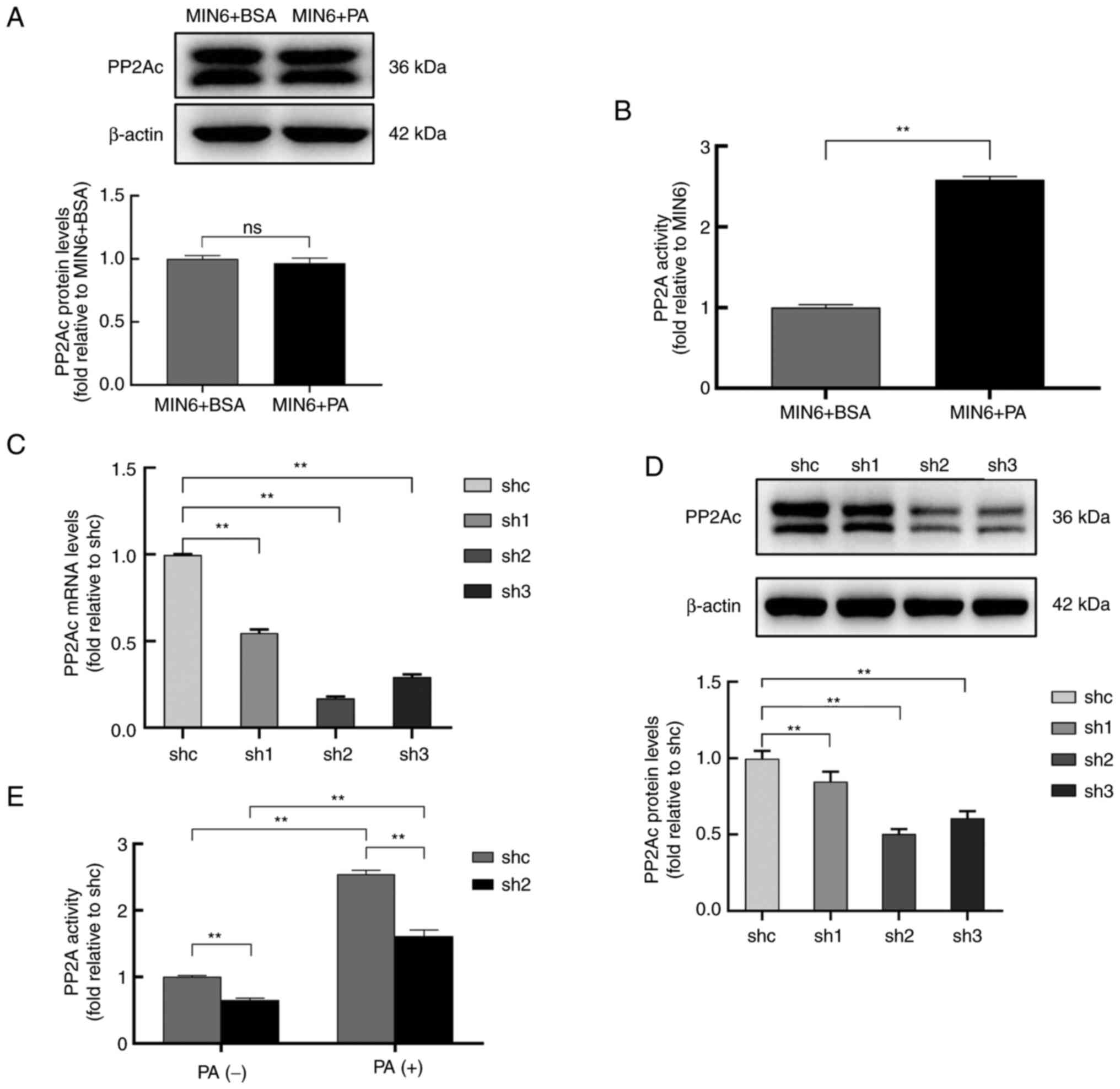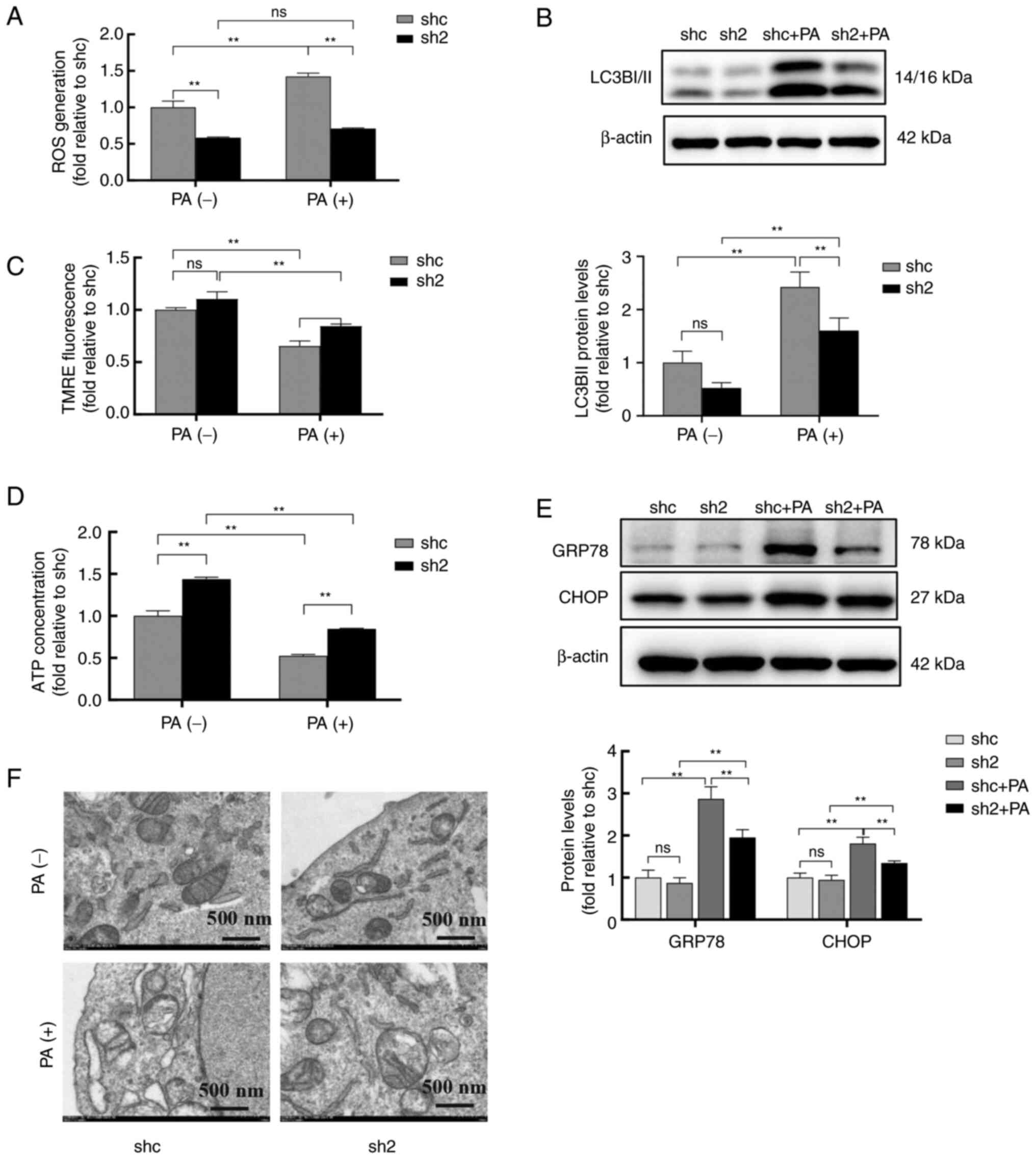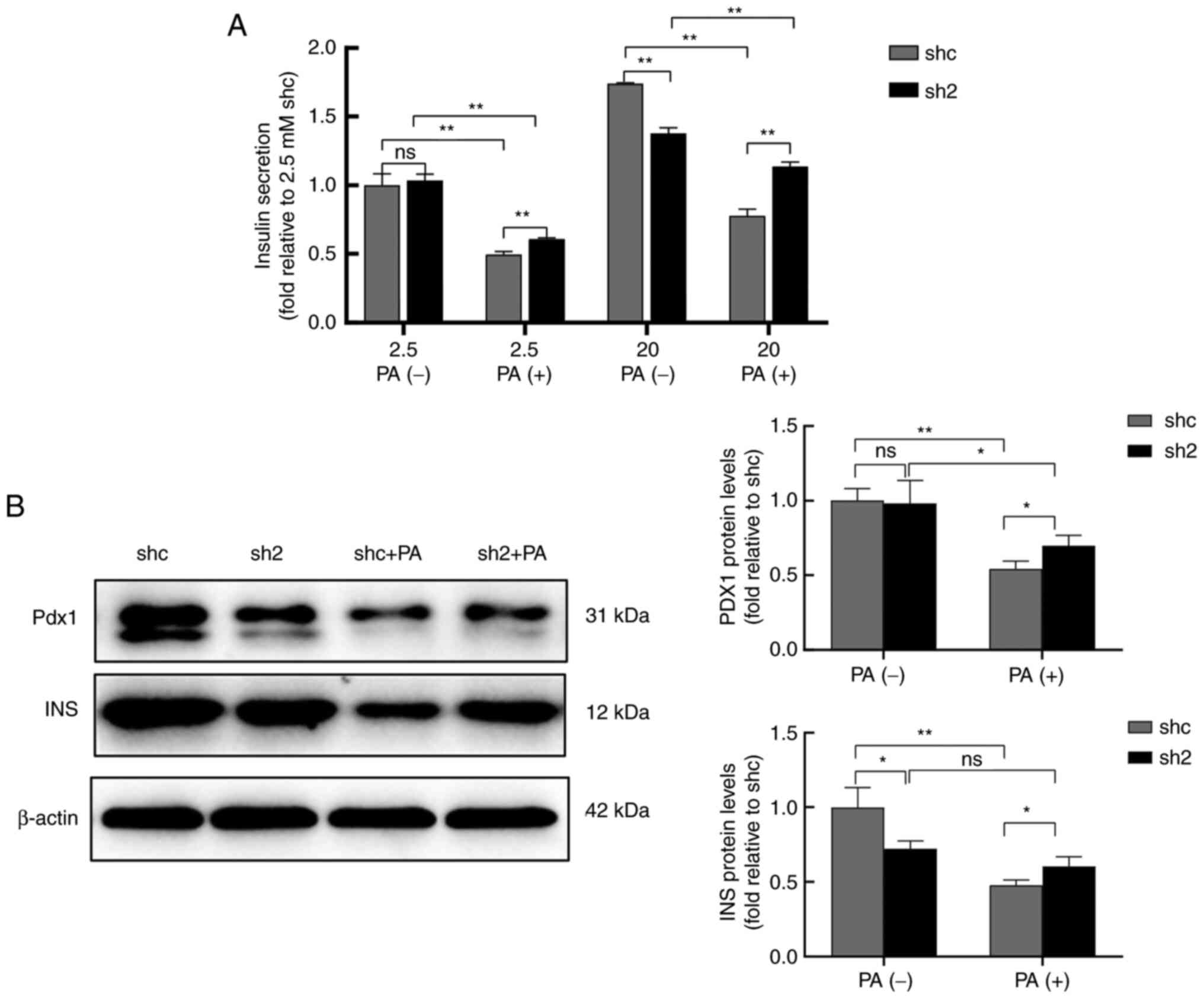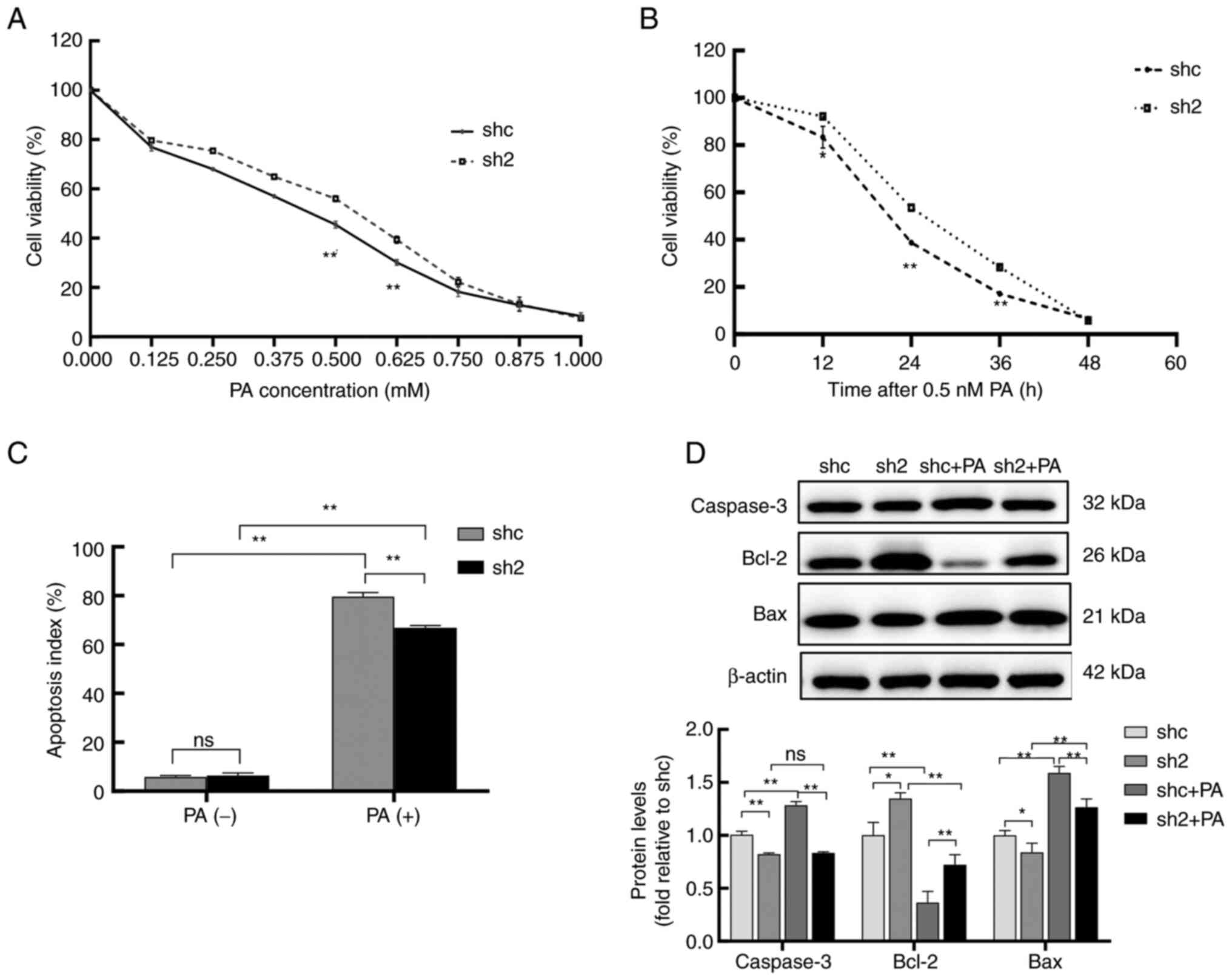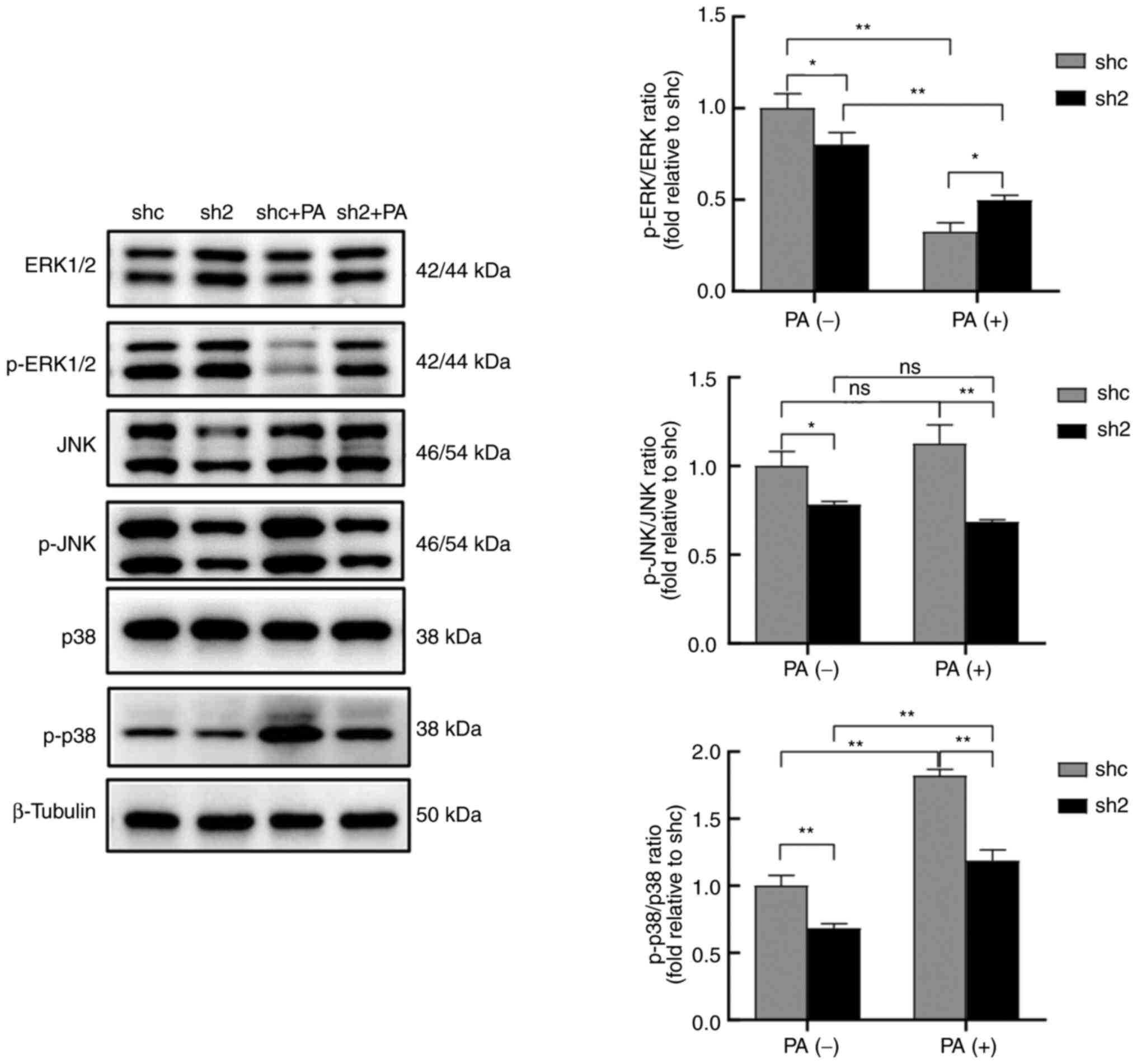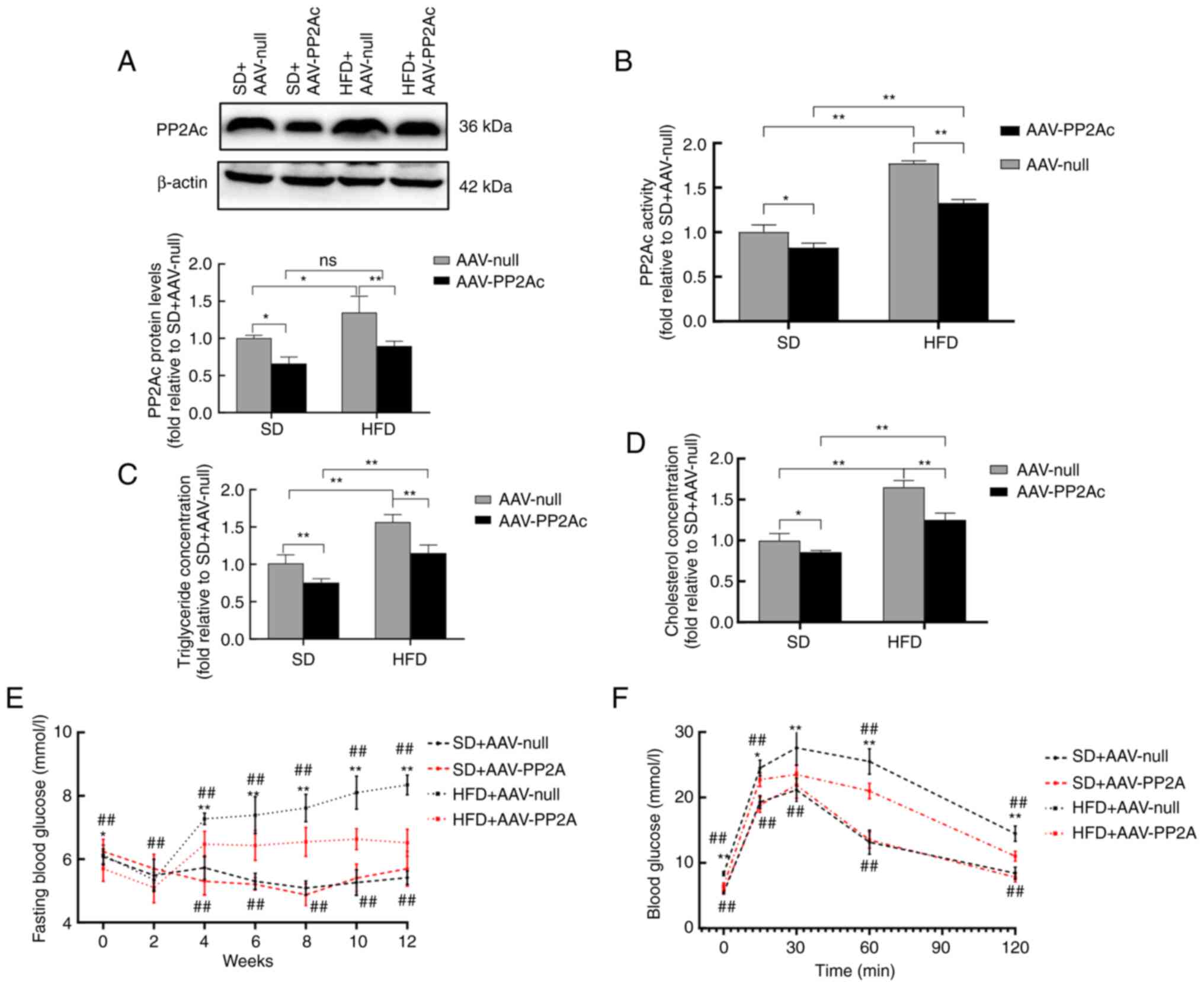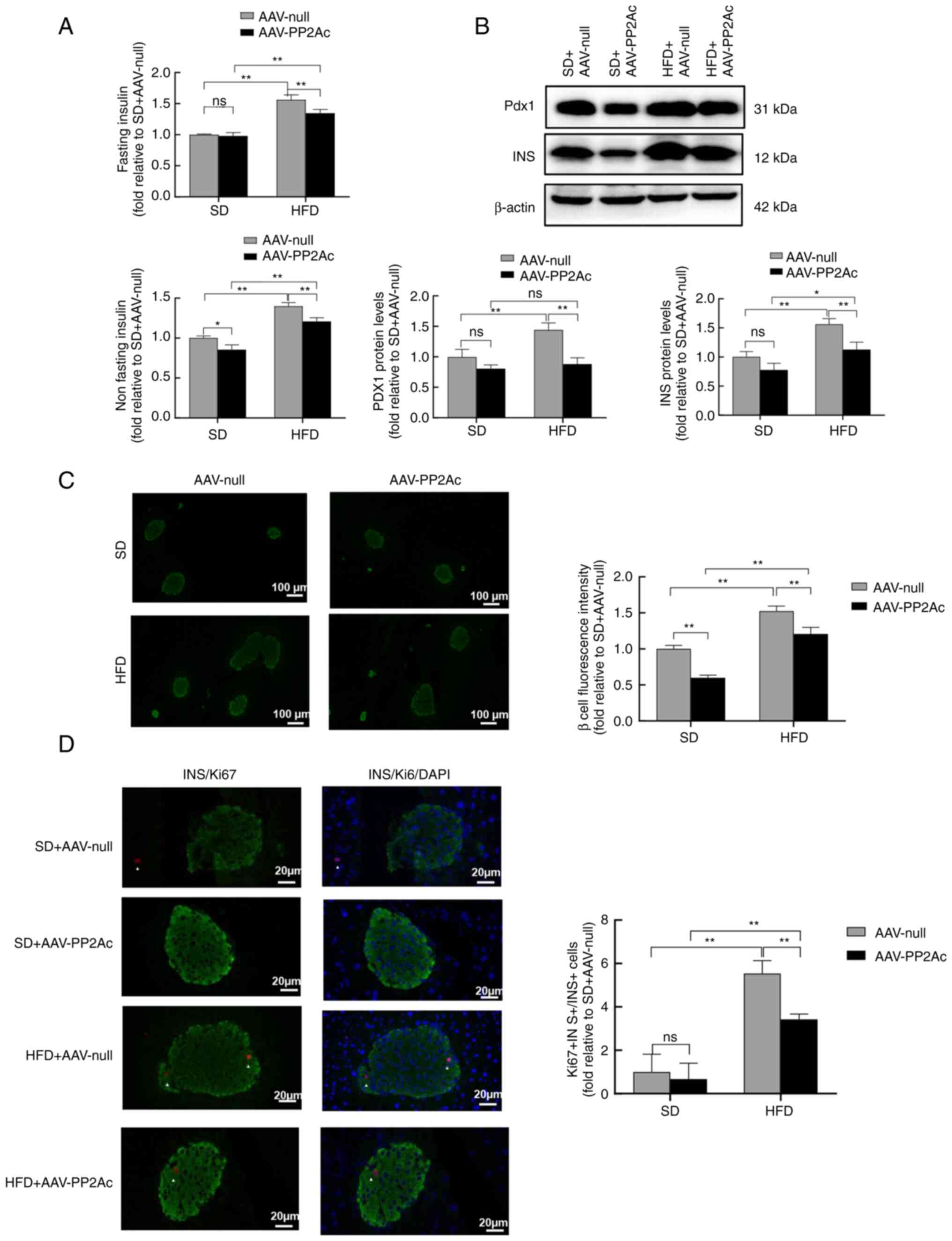|
1
|
Amanat S, Ghahri S, Dianatinasab A,
Fararouei M and Dianatinasab M: Exercise and type 2 diabetes. Adv
Exp Med Biol. 1228:91–105. 2020.PubMed/NCBI View Article : Google Scholar
|
|
2
|
Sun H, Saeedi P, Karuranga S, Pinkepank M,
Ogurtsova K, Duncan BB, Stein C, Basit A, Chan JCN, Mbanya JC, et
al: IDF Diabetes atlas: Global, regional and country-level diabetes
prevalence estimates for 2021 and projections for 2045. Diabetes
Res Clin Pract. 183(109119)2022.PubMed/NCBI View Article : Google Scholar
|
|
3
|
Xiong QY, Yu C, Zhang Y, Ling L, Wang L
and Gao JL: Key proteins involved in insulin vesicle exocytosis and
secretion. Biomed Rep. 6:134–139. 2017.PubMed/NCBI View Article : Google Scholar
|
|
4
|
Rutter GA, Pullen TJ, Hodson DJ and
Martinez-Sanchez A: Pancreatic β-cell identity, glucose sensing and
the control of insulin secretion. Biochem J. 466:203–218.
2015.PubMed/NCBI View Article : Google Scholar
|
|
5
|
Zheng Y, Ley SH and Hu FB: Global
aetiology and epidemiology of type 2 diabetes mellitus and its
complications. Nat Rev Endocrinol. 14:88–98. 2018.PubMed/NCBI View Article : Google Scholar
|
|
6
|
Klein S, Gastaldelli A, Yki-Järvinen H and
Scherer PE: Why does obesity cause diabetes? Cell Metab. 34:11–20.
2022.PubMed/NCBI View Article : Google Scholar
|
|
7
|
Oh YS, Bae GD, Baek DJ, Park EY and Jun
HS: Fatty acid-induced lipotoxicity in pancreatic beta-cells during
development of type 2 diabetes. Front Endocrinol (Lausanne).
9(384)2018.PubMed/NCBI View Article : Google Scholar
|
|
8
|
Ertunc ME and Hotamisligil GS: Lipid
signaling and lipotoxicity in metaflammation: Indications for
metabolic disease pathogenesis and treatment. J Lipid Res.
57:2099–2114. 2016.PubMed/NCBI View Article : Google Scholar
|
|
9
|
Ron D and Walter P: Signal integration in
the endoplasmic reticulum unfolded protein response. Nat Rev Mol
Cell Biol. 8:519–529. 2007.PubMed/NCBI View
Article : Google Scholar
|
|
10
|
Lin S, Long H, Hou L, Zhang M, Ting J, Lin
H, Zheng P, Lei W, Yin K and Zhao G: Crosstalk between endoplasmic
reticulum stress and non-coding RNAs in cardiovascular diseases.
Wiley Interdiscip Rev RNA. 14(e1767)2022.PubMed/NCBI View Article : Google Scholar
|
|
11
|
Hamacher-Brady A and Brady NR: Mitophagy
programs: Mechanisms and physiological implications of
mitochondrial targeting by autophagy. Cell Mol Life Sci.
73:775–795. 2016.PubMed/NCBI View Article : Google Scholar
|
|
12
|
Roszczyc-Owsiejczuk K and Zabielski P:
Sphingolipids as a culprit of mitochondrial dysfunction in insulin
resistance and type 2 diabetes. Front Endocrinol (Lausanne).
12(635175)2021.PubMed/NCBI View Article : Google Scholar
|
|
13
|
Thivolet C, Vial G, Cassel R, Rieusset J
and Madec AM: Reduction of endoplasmic reticulum-mitochondria
interactions in beta cells from patients with type 2 diabetes. PLoS
One. 12(e0182027)2017.PubMed/NCBI View Article : Google Scholar
|
|
14
|
Ježek P, Holendová B, Jabůrek M, Dlasková
A and Plecitá-Hlavatá L: Contribution of mitochondria to insulin
secretion by various secretagogues. Antioxid Redox Signal.
36:920–952. 2022.PubMed/NCBI View Article : Google Scholar
|
|
15
|
Carta G, Murru E, Banni S and Manca C:
Palmitic acid: Physiological role, metabolism and nutritional
implications. Front Physiol. 8(902)2017.PubMed/NCBI View Article : Google Scholar
|
|
16
|
Lytrivi M, Castell AL, Poitout V and Cnop
M: Recent insights into mechanisms of β-cell Lipo- and
glucolipotoxicity in type 2 diabetes. J Mol Biol. 432:1514–1534.
2020.PubMed/NCBI View Article : Google Scholar
|
|
17
|
Raman D and Pervaiz S: Redox inhibition of
protein phosphatase PP2A: Potential implications in oncogenesis and
its progression. Redox Biol. 27(101105)2019.PubMed/NCBI View Article : Google Scholar
|
|
18
|
Reynhout S and Janssens V: Physiologic
functions of PP2A: Lessons from genetically modified mice. Biochim
Biophys Acta Mol Cell Res. 1866:31–50. 2019.PubMed/NCBI View Article : Google Scholar
|
|
19
|
Ronk H, Rosenblum JS, Kung T and Zhuang Z:
Targeting PP2A for cancer therapeutic modulation. Cancer Biol Med.
19:1428–1439. 2022.PubMed/NCBI View Article : Google Scholar
|
|
20
|
Binder P, Wang S, Radu M, Zin M, Collins
L, Khan S, Li Y, Sekeres K, Humphreys N, Swanton E, et al: Pak2 as
a novel therapeutic target for cardioprotective endoplasmic
reticulum stress response. Circ Res. 124:696–711. 2019.PubMed/NCBI View Article : Google Scholar
|
|
21
|
Yang L, Jin GH and Zhou JY: The role of
ceramide in the pathogenesis of alcoholic liver disease. Alcohol
Alcohol. 51:251–257. 2016.PubMed/NCBI View Article : Google Scholar
|
|
22
|
Theurey P, Tubbs E, Vial G, Jacquemetton
J, Bendridi N, Chauvin MA, Alam MR, Le Romancer M, Vidal H and
Rieusset J: Mitochondria-associated endoplasmic reticulum membranes
allow adaptation of mitochondrial metabolism to glucose
availability in the liver. J Mol Cell Biol. 8:129–143.
2016.PubMed/NCBI View Article : Google Scholar
|
|
23
|
Chen X, Chen S, Shen T, Yang W, Chen Q,
Zhang P, You Y, Sun X, Xu H, Tang Y, et al: Adropin regulates
hepatic glucose production via PP2A/AMPK pathway in
insulin-resistant hepatocytes. FASEB J. 34:10056–10072.
2020.PubMed/NCBI View Article : Google Scholar
|
|
24
|
Arora DK, Machhadieh B, Matti A, Wadzinski
BE, Ramanadham S and Kowluru A: High glucose exposure promotes
activation of protein phosphatase 2A in rodent islets and INS-1
832/13 β-cells by increasing the posttranslational
carboxylmethylation of its catalytic subunit. Endocrinology.
155:380–391. 2014.PubMed/NCBI View Article : Google Scholar
|
|
25
|
Livak KJ and Schmittgen TD: Analysis of
relative gene expression data using real-time quantitative PCR and
the 2(-Delta Delta C(T)) method. Methods. 25:402–408.
2001.PubMed/NCBI View Article : Google Scholar
|
|
26
|
Li Y, Zhang QY, Sun BF, Ma Y, Zhang Y,
Wang M, Ma C, Shi H, Sun Z, Chen J, et al: Single-cell
transcriptome profiling of the vaginal wall in women with severe
anterior vaginal prolapse. Nat Commun. 12(87)2021.PubMed/NCBI View Article : Google Scholar
|
|
27
|
Kanehisa M: Toward understanding the
origin and evolution of cellular organisms. Protein Sci.
28:1947–1951. 2019.PubMed/NCBI View Article : Google Scholar
|
|
28
|
Dong WW, Feng Z, Zhang YQ, Ruan ZS and
Jiang L: Potential mechanism and key genes involved in mechanical
ventilation and lipopolysaccharide-induced acute lung injury. Mol
Med Rep. 22:4265–4277. 2020.PubMed/NCBI View Article : Google Scholar
|
|
29
|
Deng S, Yang L, Ma K and Bian W:
Astragalus polysaccharide improve the proliferation and insulin
secretion of mouse pancreatic β-cells induced by high glucose and
palmitic acid partially through promoting miR-136-5p and miR-149-5p
expression. Bioengineered. 12:9872–9884. 2021.PubMed/NCBI View Article : Google Scholar
|
|
30
|
Wee J, Pak S, Kim T, Hong GS, Lee JS, Nan
J, Kim H, Lee MO, Park KS and Oh U: Tentonin 3/TMEM150C regulates
glucose-stimulated insulin secretion in pancreatic β-cells. Cell
Rep. 37(110067)2021.PubMed/NCBI View Article : Google Scholar
|
|
31
|
Zhang Y, Yang X, Ge X and Zhang F:
Puerarin attenuates neurological deficits via Bcl-2/Bax/cleaved
caspase-3 and Sirt3/SOD2 apoptotic pathways in subarachnoid
hemorrhage mice. Biomed Pharmacother. 109:726–733. 2019.PubMed/NCBI View Article : Google Scholar
|
|
32
|
Janssens V and Goris J: Protein
phosphatase 2A: A highly regulated family of serine/threonine
phosphatases implicated in cell growth and signalling. Biochem J.
353:417–439. 2001.PubMed/NCBI View Article : Google Scholar
|
|
33
|
Baskaran R and Velmurugan BK: Protein
phosphatase 2A as therapeutic targets in various disease models.
Life Sci. 210:40–46. 2018.PubMed/NCBI View Article : Google Scholar
|
|
34
|
Kowluru A and Matti A: Hyperactivation of
protein phosphatase 2A in models of glucolipotoxicity and diabetes:
Potential mechanisms and functional consequences. Biochem
Pharmacol. 84:591–597. 2012.PubMed/NCBI View Article : Google Scholar
|
|
35
|
Kowluru A: Potential roles of PP2A-Rac1
signaling axis in pancreatic β-cell dysfunction under metabolic
stress: Progress and promise. Biochem Pharmacol.
180(114138)2020.PubMed/NCBI View Article : Google Scholar
|
|
36
|
Acosta-Montaño P and García-González V:
Effects of dietary fatty acids in pancreatic beta cell metabolism,
implications in homeostasis. Nutrients. 10(393)2018.PubMed/NCBI View Article : Google Scholar
|
|
37
|
Madec AM, Perrier J, Panthu B and
Dingreville F: Role of mitochondria-associated endoplasmic
reticulum membrane (MAMs) interactions and calcium exchange in the
development of type 2 diabetes. Int Rev Cell Mol Biol. 363:169–202.
2021.PubMed/NCBI View Article : Google Scholar
|
|
38
|
Lee S and Min KT: The interface between ER
and mitochondria: Molecular compositions and functions. Mol Cells.
41:1000–1007. 2018.PubMed/NCBI View Article : Google Scholar
|
|
39
|
Szymański J, Janikiewicz J, Michalska B,
Patalas-Krawczyk P, Perrone M, Ziółkowski W, Duszyński J, Pinton P,
Dobrzyń A and Więckowski MR: Interaction of mitochondria with the
endoplasmic reticulum and plasma membrane in calcium homeostasis,
lipid trafficking and mitochondrial structure. Int J Mol Sci.
18(1576)2017.PubMed/NCBI View Article : Google Scholar
|
|
40
|
Tubbs E and Rieusset J: Metabolic
signaling functions of ER-mitochondria contact sites: Role in
metabolic diseases. J Mol Endocrinol. 58:R87–R106. 2017.PubMed/NCBI View Article : Google Scholar
|
|
41
|
Xu D, Liu L, Zhao Y, Yang L, Cheng J, Hua
R, Zhang Z and Li Q: Melatonin protects mouse testes from palmitic
acid-induced lipotoxicity by attenuating oxidative stress and DNA
damage in a SIRT1-dependent manner. J Pineal Res.
69(e12690)2020.PubMed/NCBI View Article : Google Scholar
|
|
42
|
Lan J, Zhong Z, Wang Y, Xiong Y and Ye Q:
Endoplasmic reticulum stress induces liver cells apoptosis after
brain death by suppressing the phosphorylation of protein
phosphatase 2A. Mol Med Rep. 21:567–574. 2020.PubMed/NCBI View Article : Google Scholar
|
|
43
|
Xiong Y, Lan J, Huang K, Zhang Y, Zheng L,
Wang Y and Ye Q: PP2Ac upregulates PI3K-Akt signaling and induces
hepatocyte apoptosis in liver donor after brain death. Apoptosis.
24:921–933. 2019.PubMed/NCBI View Article : Google Scholar
|
|
44
|
Li N, Frigerio F and Maechler P: The
sensitivity of pancreatic beta-cells to mitochondrial injuries
triggered by lipotoxicity and oxidative stress. Biochem Soc Trans.
36:930–934. 2008.PubMed/NCBI View Article : Google Scholar
|
|
45
|
Sui X, Kong N, Ye L, Han W, Zhou J, Zhang
Q, He C and Pan H: p38 and JNK MAPK pathways control the balance of
apoptosis and autophagy in response to chemotherapeutic agents.
Cancer Lett. 344:174–179. 2014.PubMed/NCBI View Article : Google Scholar
|
|
46
|
Zheng HY, Shen FJ, Tong YQ and Li Y: PP2A
Inhibits cervical cancer cell migration by dephosphorylation of
p-JNK, p-p38 and the p-ERK/MAPK signaling pathway. Curr Med Sci.
38:115–123. 2018.PubMed/NCBI View Article : Google Scholar
|
|
47
|
Tao M, Liu L, Shen M, Zhi Q, Gong FR, Zhou
BP, Wu Y, Liu H, Chen K, Shen B, et al: Inflammatory stimuli
promote growth and invasion of pancreatic cancer cells through
NF-κB pathway dependent repression of PP2Ac. Cell Cycle.
15:381–393. 2016.PubMed/NCBI View Article : Google Scholar
|
|
48
|
Jangati GR, Veluthakal R, Susick L, Gruber
SA and Kowluru A: Depletion of the catalytic subunit of protein
phosphatase-2A (PP2Ac) markedly attenuates glucose-stimulated
insulin secretion in pancreatic beta-cells. Endocrine. 31:248–253.
2007.PubMed/NCBI View Article : Google Scholar
|















